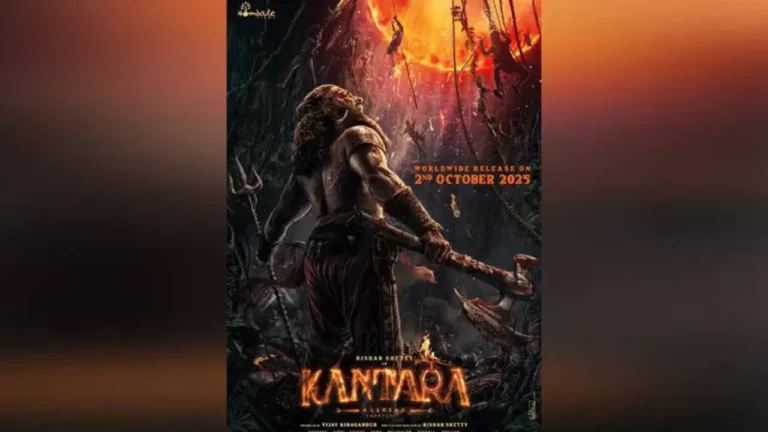Racing Sims Meet Virtual Casino Pit-Stops
Ultra-realistic racing simulations now incorporate high-stakes casino lounges at pit-stops, blending precision driving with thrilling gambling breaks in immersive virtual worlds.
Racing Sims and Virtual Casino Pit-Stops
Racing Simulations and Casino Integration Overview
Sims have become hyper-realistic worlds where every turn, every shift and every aerodynamic factor plays out according to the laws of real-world driving. But as the genre continues to refine the experience of immersion, designers look to new ways to interrupt long laps with spikes of excitement. Cue the idea of the virtual CASINO pit-stop: a specific portion of a race where drivers can momentarily swap speed for risk. By threading mini-casino-style events through the pace of a race, it's a way for developers to offer novel reward loops and strategic detours without ripping up the flow of competition. This cocktail appeals to a player’s love of risk and reward, providing a gambler’s high with pure driving mastery.
The Progress of Racing Simulations
Early racing games were, as a rule, all about the arcade thrill: power slides, nitro boosts, pixelated competitors. Bridging into the era of simulation, franchises such as Forza Motorsport and Gran Turismo brought in realistic tire wear modeling, dynamic weather systems and track surface degradation. Player skill was now less about committing shortcuts to memory and more about mastering racing lines, brake bias, and fuel management. But players went on to generate more and more hours of play, and to some it seamed repetitive during endurance racing or long career mode play. Throwing in occasional casino pit-stops adds variability, here even the most jaded sim-racer is forced to stop for a high-octane twirl.
The Casino Pit-Stop Concept
Unlike pit-stops at physical tracks, where crews change tires and add fuel, virtual casino pit-stops put drivers in lush lounges. Picture a blistering run down the final sector, but instead pulling into a neon-lit booth. Players here place bets with electronic “race credits,” and boards with digital roulettes or slot-style payout meters indicate the results. Wins get you temporary performance boosts—say, engine overclocking, instant tire rejuvenation, or slipstream magnets—while losses only mete out mild handicaps such as delayed refueling or weighted ballast. When mechanical improvements are combined with luck, pit-stops turn strategic refueling into psychological poker, raising tons of stakes on pure talent-supported chance.
Technical Architecture for Virtual Pit Stops
The modular approach A modular design has to be pushed if we are to place casino modules in racing engines. The simulation loop itself has to fluidly push and pull players into a sandboxed casino world, and feed the results back to the physics engine. This involves:
- Modularity: Casino mini-games are standalone sub-services that communicate over API endpoints. This separation guarantees that potential crashes or de-synchronizations during the pit-stop do not affect the main simulation of the race.
- State Serialization; Player Car is Serialized once inside the PitStop (Fuel,tyres wear,engine temp) Only averaged values (such as “current credits:1500”) are sent to the casino service for the sake of performance and fair play.
- Real-Time Result Reconciliation: When mini-game ends, results are regurgitated as separate_action tokens (e.g. “apply torque boost 10% for the next 30 seconds”). The simulation engine confirms then carries out the tokens within reason to void exploits.
Real-time Connection Between Race Telemetry and Casino Mechanics
For the sake of immersion, pit-stop mini-games ought to be based on real time race data. For example, a driver with a commanding lead may be offered house-edge odds, similar to the casino's strategy of always hedging the house advantage. Alternatively, a racer trailing could access special high-variance reels that deliver bigger comebacks. Richie: Telemetry feeds — position delta, lap times, tire degradation — provide dynamic odds adjustments. So it's a self-adjusting mechanism, one that promotes fairness, discourages grinding out and encourages casino pit-stops to be sources of competitive balance rather than sources of disruption.
Play and Engagement in Gameplay Buildings and Tools
Carefully-timed pacing is necessary for incorporating pit-stops into a race design. Overuse threatens to dilute the core driving experience; underuse turns them into novelty gimmicks. Benchmarks strategy stop aways — at halfway for sprints, and every 2-3 laps for enduro events. In these windows, players will see mini-games that correspond to the world of racing:
- Turbo Spin: A virtual wheel with items based on nitro levels or engine power surges.
- Precision Slots: Reels that show tire compounds can match for a longer grip.
Combos of draw cards (upgrade cards that players will draw & mix with other draw cards to make performance mod sets).
The mini games takes less than 20 second only to play and will not disrupt your busy life at all. To further promote skillful play, pit-stops might incorporate more of a reaction-based mechanic — such as timed button presses or motion controls in VR — rewarding hand-eye coordination as well as strategic risk-taking.
Balancing of risk and reward in pit stop rewards
Every casino mechanic has risk and rewards with them. In race sims, motivators have to appeal within the context of competition. Loss handicaps are negligible — a longer pit-lane time, or a brief delay in starting the engine — with winners gaining clearly significant benefits. Again – players will receive even more rewards adjusted based on their tier:
- Tier One: Low-paying spin with small grip or refuel gain.
- Tier Two: Slot in the middle, offers engine torque multipliers or quick-dry brake fluid.
- Tier 3Jackpot reel valuable at high stakes, rare avionic upgrades or Heat resistant tire.
With our domestic test drivers and telemetry engineers, pit-stop performances are revised dynamically based on mid-race events. Subtle humor — a virtual pit-crew clown congratulating or needling the player, say — eases the tension, mirroring casino-floor banter in a playful acknowledgment.
UI/UX Considerations
Slick interface ensures immersion is retained when bouncing between racetracks and casino pit-stops. Key considerations include:
- Seamless transitions: Aircraft animations eliminate transitions, fade-outs, or fade-ins for a better immersion; sounds dynamically transition from the sound of aircraft engines to relaxing sounds in a lounge.
- Canvy HUD Elements: HUD elements dynamically adjust to pit stop view ports to show only applicable controls. In VR, where the distinction between cockpit and lounge blurs, the digital barriers between the two vanish entirely.
- Clear Feedback Loops: (Win cheering: animated flurries of particle confetti or pit-crew actions), (Lose sad: gentle camera shake or distress sounds), etc. Casino best practices are for immediate, unambiguous feedback.
Visual vs Performance is important, especially in the case of VR things, with split second experiences if the framerate tanks your head can notice.
Loops of Vision and Sound
The feedback loops borrowed from casino design — chimes, jingle crescendos, flashing neon borders — have been just as naturally employed in racing pit stops. A winning spin could set off synchronized engine revs, emphasizing the two themes of speed and luck. In return, near-miss animations — a hair short of a three-of-a-kind on tight slots — mimic the “so close!” ‘moments’ of slot machines, tempting players to push harder on track to recoup losses.” These multimodal hints have to be tuned to increase excitement so that they do not oversaturate sensory systems related to driving precision.
Economics and business model
There is some optional token bundling and cosmetic branding partnership monetization potential. In racewise performance, you earn tokens to spend in the base game, but you can buy more chips for longer pit stop runs or the like by using above-standard chip tokens. Premium passes gain VIP pit-lane lounges with special mini-game tweaks and better odds. Brand integrations — those virtual corner takeovers in casino lounges — provide organic cross-promotion for automotive and gambling partners.
|
Aspect
|
Standard Racing Sims
|
Sims with Casino Pit-Stops
|
|
Reward System
|
Fixed mechanical upgrades
|
Randomized performance tokens
|
|
Player Engagement
|
Skill progression loops
|
Variable-ratio risk loops
|
|
Monetization
|
DLC packs, cosmetics
|
Token bundles, VIP passes
|
|
Brand Integration
|
Trackside banners
|
Branded pit-stop lounges, sponsored mini-games
|
|
Session Pacing
|
Continuous driving
|
Intermittent casino detours
|
The following chart will show how virtual pit-stops provide new income sources without degrading simulation ideals.
Sponsorship & Branding Opportunities
Automaker, tire maker and casino pit-stop places can be co-branded. For instance, a luxury supercar brand could run an exclusive lounge with high-variance spins that could score you branded performance decals. Cross-promotion goes IRL with real-world pop-up casino booths at eSport races, reflecting in game pit-stop "lottery" mechanics. These collaborations enhance credibility and create secondary marketing value.
Equity, Fairness, and Ethical Compliance Beyond Gaming
Introducing native casino features in games has pricked the issue of gambling mechanics’ validity. To keep design in check:
- Transparent Odds Displays / Mini-game RTP Equivalences: Through their respective interfaces, mini-games show approximate probabilities for all outcomes, similar to the way slot machines show RTP.
- Token Rewards: In-game tokens are valueless and come with no cash value, allowing us to comply with regulations while making certain our games remain safe and fun-friendly.
- Gaming responsibly: play safe with session play timers, or enter in voluntary cooldowns so you can take your pitstop (EG: drink, eating break) duty.
Ethical protections foster trust that simulated gambling remains an exciting adjunct and does not become a predatory feature.
Applications and Prototype Cases in Video Game Development
The video game industry is accelerating into innovative territory as racing sims introduce virtual casino pit-stops , merging high-speed competition with high-stakes entertainment. By 2025, game developers will leverage cloud gaming and virtual reality to create immersive gaming experiences where players can pull off the track into lavish pit-stop casinos, accessible through platforms like next-gen console systems and mobile gaming services.
This game design innovation uses artificial intelligence to personalize odds and rewards based on racing performance, allowing players to stream seamless transitions between adrenaline-fueled laps and blackjack tables. As augmented reality enhances both the racetrack and casino environments, these hybrid experiences are poised to shape the future of the game industry , particularly in mobile games that blend quick races with bite-sized gambling mechanics. The integration of stream games technology means players to stream these dynamic worlds anywhere, marking a bold new direction for gaming technology that could redefine competitive and social play in the gaming industry .
Royal Circuit Casino Pit Stop
In the alpha build of Circuit Royale, a mono-car pit-stop lounge appears on Lap 5 of the 6-Lap Sprint Races. Telemetry early on showed a 12% improvement in player retention for mid-season events due to the excitement of chance-giving torque boosts. Developers adjusted how often mini-games appear after performing A/B tests that discussed how hot wheels land with the purpose of avoiding uneven spikes in performance.
The indie title Night Racer features a “Garage of Fortune” which allow players to bet custom upgrade kits. Wins were rewarded with special bodykits that provided him with a little extra downforce. Being purely cosmetic has potential implications for the physics of gameplay, but these items were also stamped with rarity badges and thus became a means of swapping amongst the community and of pure social boasting. The promotion led to a 20% increase in cosmetic DLC sales and an increase in forum discussion for rare loot.
Future of Gaming Technology and Innovation Current Trends
The future of video games is shifting gears as racing sims incorporate virtual casino pit-stops , creating a revolutionary gaming experience that blends high-speed competition with high-stakes entertainment. Gaming companies are leveraging vr technology and cloud gaming technology to let players access games where they can pull into opulent pit-stop casinos mid-race—accessible through headsets like next-gen VR devices or traditional console setups. This trend shaping the industry in 2025 uses blockchain technology for secure in-game betting and ray tracing technology to render dazzling casino interiors, while game engines power realistic driving physics alongside blackjack tables.
Players stream games directly via Xbox Cloud Gaming and other cloud gaming services , enjoying seamless transitions from track to casino in multiplayer gaming sessions that redefine competitive gaming . According to industry trends , these hybrid experiences represent some of the most exciting trends to watch , merging the gaming world of sim racing with casino-style risk/reward systems. From indie games testing compact concepts to AAA titles offering full interactive gaming economies, this innovation demonstrates how advancements in technology are creating new gaming platforms that go beyond gaming conventions.
As technology becomes more accessible , these racing sims with casino pit-stops are set to accelerate the future of gaming technology , offering gaming enthusiasts unprecedented ways to experience both speed and strategy in this generation of game consoles . The gaming community now enjoys a diverse gaming landscape where victory laps can lead to high-roller lounges—proving how current trends are merging distinct genres into one thrilling gaming ecosystem .
AI-Based No-Fuel Pit-Stop Adviser Bots
Machine learning models using mass race data can predict the best times for hitting the casino pit-stop. Such virtual advisors break down lap times, fuel numbers, and what an opponent might be doing to help a naturally conservative driver decide whether to turn the wheel left or put the pedal to the metal. Real-time coaching overlays press home the future of data-driven racing strategy.
Reward Verification on the Blockchain
Use of distributed ledgers provides provably fair mini-game RNGs. Players may also audit their own spins to see that house-edge amounts are correct. Tokenised pit-stop rewards — a unique digital collectible or a limited-edition livery — have real scarcity, to attract aftermarket trading and to prolong long-tail engagement.
Conclusion: Guiding the Future of Racing with a Little Casino Style
Racing simulations and virtual casino pit-stops are a reckless collision of skill and luck. Racetracks can be kept fresh lap after lap by developers, who for so long have had to rely on modular tracks that offer monotony in terms of their challenges, with some thought processes given to seamless UI transitions and balancing some risk-reward loops with such sims as well. Ethical options – including fair odds, non-cash tokens and voluntary play features – mean that casino thrill is a fun added extra on top of the core racing action.To find out more, talk to the team on hentaiheaven.pro. As AI advisors and blockchain verifiability become more widespread, the dichotomy between virtual racetracks and casino floors will fade deeper into obscurity, creating dynamic, data-driven racing environments where every pit-stop calls to us with the chance of fortune and every corner hums with potential.











